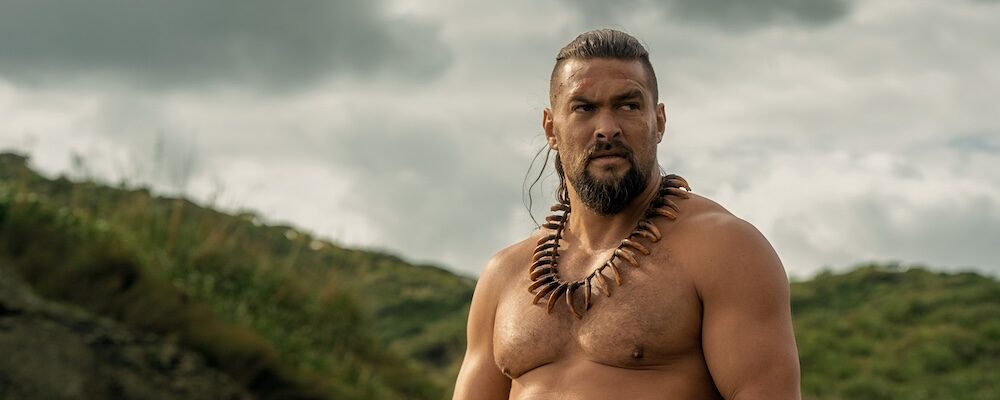‘Chief of War’: Jason Momoa Leads a Stunning Hawaiian Epic Full of History, Fire and Blood
Alci Rengifo
As many films seem to feel smaller in a world of shifting media, streaming is becoming the new home of genuine epics. Look no further than Apple TV+’s “Chief of War,” a stunning production that first grabs with its sheer scale. Honolulu-born star and co-creator Jason Momoa proves that indigenous Hawaiian history can be turned into riveting material. With co-creator Thomas Pa’a Sibbett, Momoa has fashioned a series that has all the grandeur, bloodlust and edginess of the sort of productions usually reserved for fantasy tales. On that note alone this show deserves attention. Even when it meanders, it never ceases to impress.
The time is the late 18th century. Ka’iana (Momoa) is a former warrior chief who has exiled himself from Maui. The move has left lingering resentment among those surrounding King Kahekili (Temuera Morrison), a cold would-be conqueror guided by a prophecy involving a figure who will unite the Hawaiian kingdoms. Ka’iana believes he has found peace fishing and building a community with his new ohana, which includes siblings Nahi (Siua Ikaleʻo) and Namake (Te Kohe Tuhaka). He also has a wife, Kupuohi (Te Ao o Hinepehinga) who has brought along sister Heke (Mainei Kinimaka). Kahekili soon tracks him down and lures Ka’iana into helping with the invasion of O’ahu, claiming it was planning an attack. What results is a brutal massacre of a community that was clearly not posing any threat to Maui. The incident leaves Ka’iana unsettled and he’s soon enough running for his life from the mad Kahekili’s men. The chase brings Ka’iana into contact with the “paleskins,” European and American colonizers who keep arriving with their ships and modern weapons.
The plot of “Chief of War” is as sprawling as a thick paperback and a series is definitely the appropriate format. Like FX’s acclaimed “Shōgun,” it combines meticulous period details with sweeping storytelling that crams in everything including prophecies, warrior kings and formidable heroines. These stories tend to span years and Ka’iana’s escape from his pursuers results in him being grabbed at sea by a European expedition. Cut to a year later and he has learned a little English while tagging along as an explorer in faraway Alaska, building camaraderie with Tony (James Udom), a Black member of the expedition who endures the racism of others on the ship. These moments don’t offer much that’s new in terms of this kind of narrative angle. Ka’iana learns how to wear pants, the terms for the parts of a musket and insists he must return home. This doesn’t mean these sections are not effective or entertaining, since it’s always intriguing to ponder how the Western world’s colonial enterprises produced cultural connections. It doesn’t take long for Ka’iana to figure that if he can buy lots of weapons, he can arm his people.
The Western material is thankfully not the main point of “Chief of War,” which was shot mostly in Hawaii and New Zealand with a cast that is largely Native Hawaiian, Maori and Tongan and dialogue is heavily spoken in ʻOlelo Hawai’i, the native language of the islands. In the tradition of works like “Apocalypto” and “The Dead Lands,” the Indigenous world dominates. Something else that links this series to that kind of filmmaking is the visceral style of the violence. Battle scenes are bone-crunching and raw, where we feel the adrenaline terror of hand to hand combat. Much of the narrative has the feel of a classic epic where motivations are rather simple yet grand. The key female character is Ka’ahumanu (Luciane Buchanan), who to her dismay is promised in marriage to Kamehameha (Kaina Makua), nephew of King Kalani’opu’u (Branscombe Richmond). Kamehameha has little pretensions of being some kind of warrior, even if his uncle is obsessed with the title of “God of War.” When the king dies, Kamehameha is stuck with the title to the jealous anger of Keoua (Cliff Curtis, who performs with great, steely obsession), the king’s brother who ascends to the throne but wants the God of War mantle. This sets the stage for more bloody battles, shot with stunning visuals that include flaming volcanoes, raging seas and thunder. Even when the series is at peace we get Jason Momoa trapping and riding a shark. There are familiar bits of historical tension, such as Kamehameha insisting on finding a way to coexist with the white Europeans while Ka’iana suspects they will bring nothing but future trouble for the Hawaiian kingdoms. We all know who was proven right.
For Momoa, this series can also rank as a personal artistic triumph. In addition to the cultural significance of the series, the muscled actor proves he can play a more intelligent, observant version of the action roles that have framed his career. Consider Ka’iana a wiser version of his Khal Drogo in “Game of Thrones.” Though, in the epic season finale, he does bring back some of that character’s mood while snarling on a battlefield that he will “feed fire” to the men and gods of Keoua. Everyone involved delivers performances that get pumped to the limit by the end when volcanoes erupt and characters meet their bloody end atop dry lava beds. There is even a small orgy at one point. The key final showdown doesn’t even take place, leaving the road open to a second season. What is truly refreshing is that we have seen this kind of storytelling before, but often reserved for Westernized history or epics, rarely for Indigenous societies. By showing viewers that Hawaiian history makes for excellent, hot-blooded entertainment, “Chief of War” hopefully opens the door for other histories to get the same treatment, which is so past due.
“Chief of War” season one begins streaming Aug. 1 on Apple TV+.

